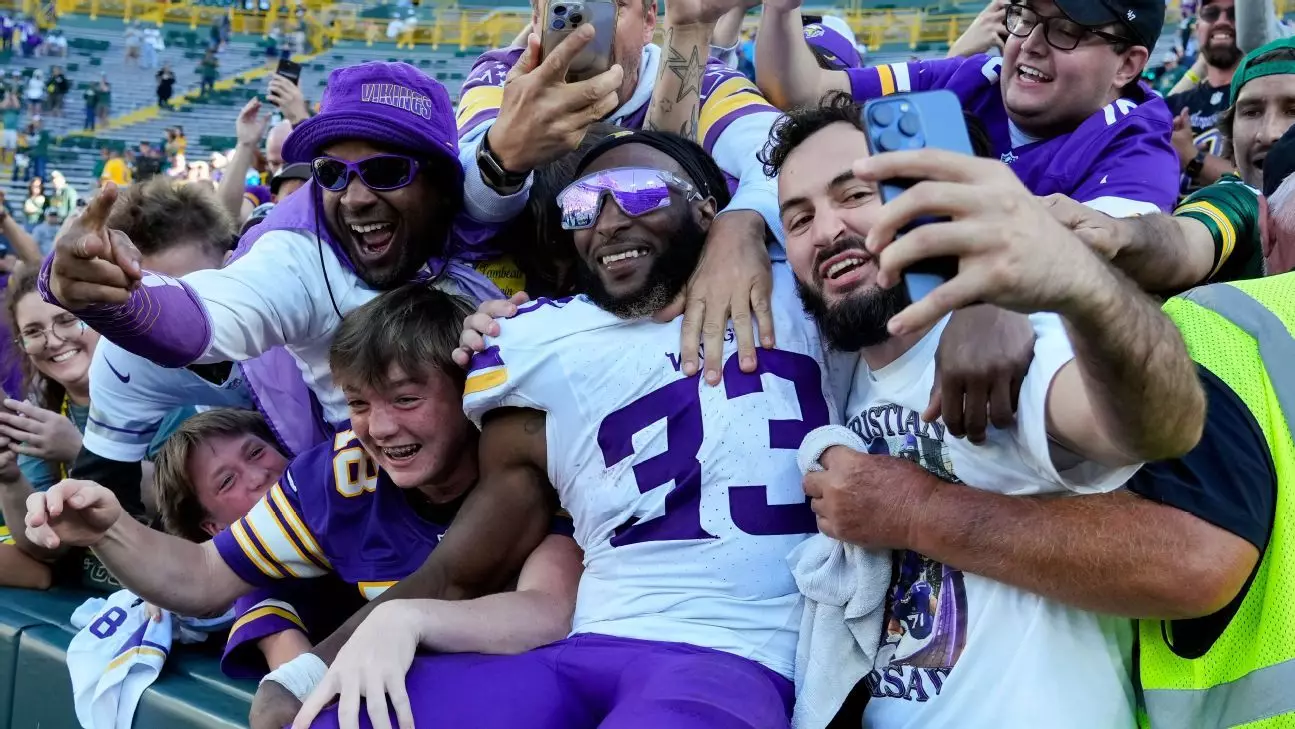As the Minnesota Vikings approach the off-season, it’s essential to assess the dynamics of their backfield, especially concerning veteran running back Aaron Jones. With question marks looming about his future, it seems the franchise is not inclined to replicate the heavy workload that characterized Jones’ first season with the team. This article delves into the implications of this shift, the evaluation of the Vikings’ roster, and the predominant strategies that could define their running game moving forward.
In the 2024 season, Aaron Jones emerged as a pivotal player for the Vikings, amassing impressive statistics, including 1,138 rushing yards and 1,546 total yards from scrimmage. Despite his injuries, Jones showcased his durability, performing well under pressure. However, as he enters free agency at the age of 30, the Vikings seem to be contemplating a different role for him. Coach Kevin O’Connell, while acknowledging Jones’s impact, has hinted at the need for a more balanced approach to managing his playing time. This highlights a broader strategic pivot for the Vikings as they seek sustainable success without over-reliance on a single player.
The Vikings‘ past reliance on Jones may be indicative of broader patterns observed in the NFL, where teams increasingly favor running back committees. O’Connell recognizes Jones’s past experiences within such systems and seems to advocate for a return to that model. This could lead to a scenario where Jones is part of a tandem, allowing for a more dynamic backfield that alleviates pressure and prolongs player longevity, potentially elevating the performance of the entire unit.
Alongside Jones, the Vikings have other options in their backfield. The team drafted Ty Chandler, who initially appeared to be a promising backup, but lost favor as the season progressed. The acquisition of Cam Akers suggests that the Vikings are exploring avenues to enhance their depth and competency at the running back position. However, this juggling of talent raises questions about consistency and the ability to develop cohesion among the running backs.
In light of the upcoming draft, the Vikings face a complex landscape. There is substantial talent available in the running back class, including standout prospects like Ashton Jeanty and TreVeyon Henderson. Although the Vikings hold minimal draft capital, concentrating on a running back still seems enticing given the potential to cultivate fresh talent alongside seasoned players. This draft strategy could reflect a commitment to building a well-rounded offensive game plan that remains adaptable in the face of changing player dynamics.
In a broader context, the Vikings‘ offensive strategy has undergone significant changes since O’Connell’s arrival. Traditionally reliant on star receiver Justin Jefferson, the team’s overall approach towards the run game has fluctuated. The marked increase in designed runs in 2024 suggests an intentional shift towards establishing a more balanced offense, particularly with Sam Darnold’s introduction as the quarterback.
The evolving play-calling reflects a response to the team’s previous over-reliance on passing and the need to inject unpredictability into their gameplay. Jones, if retained, could play a crucial role in further facilitating these developments. However, it’s essential to determine whether his skill set aligns with the envisioned role, as transitioning from a featured back to a rotational contributor could present challenges in adjusting on-field actions and expectations.
As the Vikings approach free agency and the draft, their decisions regarding Aaron Jones and overall team structure will play a significant role in the team’s future success. The inclination to preserve Jones as a more rotational player may ultimately reflect a broader understanding of player health, performance sustainability, and strategic versatility. This potential evolution could lead to a more diverse and unpredictable offensive scheme designed to elevate the team’s competitiveness within a tough division.
The Vikings are at a crossroads with their backfield strategy, and it remains to be seen how they will balance the veteran presence with emerging talent. With a mix of experience, evolving coaching philosophies, and high-caliber draft options, the franchise stands poised to redefine the dynamics of their offensive unit, aiming not only for immediate results but also long-term sustainability in an ever-changing NFL landscape.


Napsat komentář